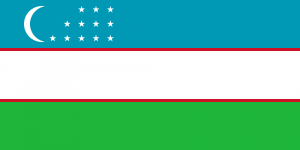Language/Northern-uzbek/Culture/Traditional-Dishes
| ◀️ Causative Constructions — Previous Lesson | Next Lesson — Tea Culture ▶️ |
Introduction
Welcome to the "Complete 0 to A1 Northern Uzbek Course!" In this section, we will explore the fascinating world of Northern Uzbek cuisine. Uzbek cuisine is an essential part of Uzbek culture, with a blend of Central Asian, Persian, and Russian influences. From the succulent meat dishes to the aromatic spices, Uzbek cooking is a delight for travelers and foodies alike.
In this lesson, we will focus on Traditional Dishes from Northern Uzbekistan. We will describe the typical ingredients, cooking methods, and cultural significance of each dish. By the end of this lesson, you will have a basic understanding of Northern Uzbek cuisine and be ready to try some of these mouth-watering dishes for yourself!
Consider broadening your understanding by checking out these related lessons: Tea Culture & Art and Music.
Plov (Pilaf)
Plov is considered to be the national dish of Uzbekistan, and it has many regional variations. In Northern Uzbekistan, plov is made with lamb or beef and features a mixture of rice, fried onions, garlic, and carrots. The dish is cooked in a large cauldron known as a kazan over an open flame.
When cooking plov, Northern Uzbeks use a unique technique to achieve the perfect texture and flavor. First, the rice is soaked in water for several hours to soften the grains. Then the rice is fried with the other ingredients, forming a golden crust on the bottom of the kazan. This crust, known as Kaskoni, is considered a delicacy and is served on top of the rice.
| Northern Uzbek | Pronunciation (Latin Script) | English Translation |
|---|---|---|
| Plov | [ploʊv] | Pilaf |
| Kazan | [kɑːzən] | Cauldron |
| Kaskoni | [kʌskoʊni] | Golden crust |
Samsa
Samsa is a traditional Uzbek pastry that is similar to the Indian samosa. The dish consists of a savory filling, often made with lamb or beef, onions, and spices, baked inside a crispy dough pocket. Samsa can also be made with potatoes, pumpkin, and cheese fillings.
The pastry has a triangular or square shape and is usually eaten as a snack or appetizer. It is popular throughout Uzbekistan and is often sold from roadside stands and cafes.
| Northern Uzbek | Pronunciation (Latin Script) | English Translation |
|---|---|---|
| Samsa | [sæmsə] | Uzbek pastry |
Shashlik
Shashlik is a popular dish throughout Central Asia, consisting of skewered and grilled meat that is marinated in a mixture of spices and vinegar. In Northern Uzbekistan, shashlik is usually made with lamb or beef, and served with a side of onions, tomatoes, and bread.
The dish has its roots in the nomadic lifestyle of Central Asian tribes, who would skewer meat on their swords and roast it over an open fire. Today, shashlik is a favorite dish for families and social gatherings, and it is typically enjoyed in the summer months.
| Northern Uzbek | Pronunciation (Latin Script) | English Translation |
|---|---|---|
| Shashlik | [ʃæʃliːk] | Meat skewer |
Conclusion
Cuisine is an integral part of any culture, and Uzbekistan is no exception. The vibrant flavors and aromas of Northern Uzbek cuisine reflect the region's rich history and cultural diversity. In this lesson, we explored three of the most popular dishes in Northern Uzbekistan: plov, samsa, and shashlik. As you continue to learn Northern Uzbek, we encourage you to discover more about the fascinating culinary traditions of this beautiful country.
Impressive work on finishing this lesson! Explore these additional pages to enhance your understanding: Wine and Spirits & Names in Uzbekistan.
Other Lessons
- Traditions and Customs
- Art and Music
- Wine and Spirits
- Folktales and Legends
- Tea Culture
- Names in Uzbekistan
- Direct and Indirect speech
- Poetry and Prose
- Contemporary Uzbek Literature
| ◀️ Causative Constructions — Previous Lesson | Next Lesson — Tea Culture ▶️ |

